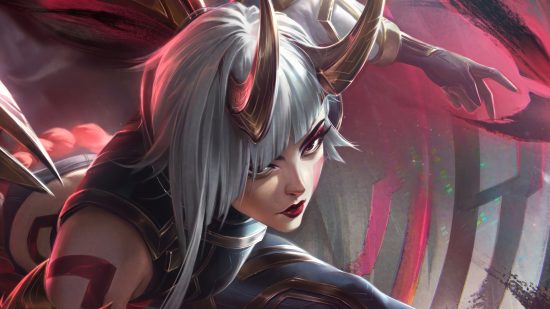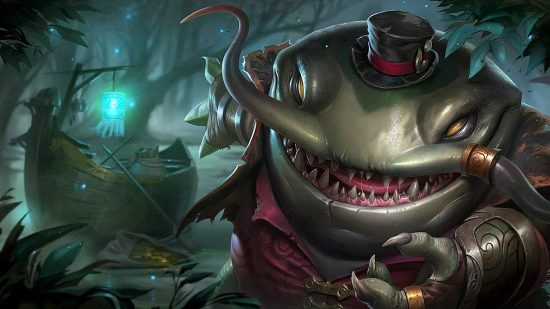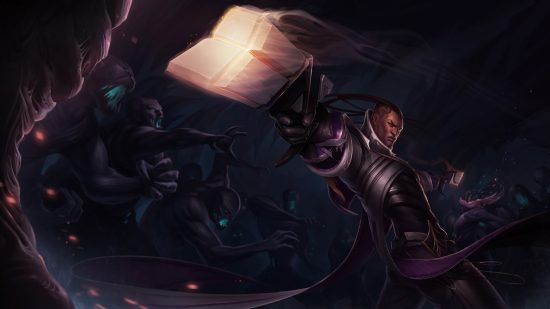What are the LoL ranks? League of Legends is the undisputed biggest PC game of all time. The MOBA’s tactical gameplay and diverse selection of champions makes each game a unique challenge. On top of that, the LoL ranks system is one of the most robust competitive ladders out there.
As in any game, you’ve got to separate the LoL Worlds candidates from the scrubs in competitive play. How do the best LoL players in the world prove their worth in the best MOBA game and, more importantly, stop getting matched with those pesky low-level players? The answer is the League of Legends ranking system, which places the millions of LoL players around the globe into a tier and division based on their ability and performances.
However, it can be a daunting prospect for newcomers to competitive LoL. Many have lingering questions, like: How many ranks are there, what are they called, which one will I start in, and how many people find themselves in the top rank? To make your transition into the world of competitive LoL a little simpler, we’ve put together some answers to the most frequently asked questions about the League of Legends ranking system.
LoL ranks explained
League of Legends ranked mode features an intricate ranking system, which includes nine tiers, each split into four divisions (four being the lowest, and one being the highest).
You progress through each division and tier by earning League Points (LP) for games that your team win. The exact amount of points is determined by your Matchmaking Rating (MMR). If you’re victorious against a team with a higher MMR than yours, you will gain more LP than if you were to beat a team with a lower MMR than yours.
You can also lose LP for games that you fail to win or for games that you rage quit. Again, the amount of LP you lose depends on the MMR of you and your opponent.
At the end of each ranked season, your tier and division will be locked in as your official rank for that season. Seasons last nearly a year and are divided into two splits.
You will then gain in-game rewards at the end of each season, such as special skins. The amount and quality of rewards you earn will increase depending on what tier you finish in.
What are the ranks in League of Legends called?
The ten ranks in competitive League of Legends are Iron, Bronze, Silver, Gold, Platinum, Emerald, Diamond, Master, Grandmaster, and Challenger. You can check out their symbols below:
| Rank | Symbol |
| Iron | 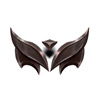 |
| Bronze | 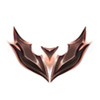 |
| Silver |  |
| Gold | 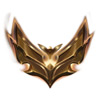 |
| Platinum | 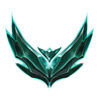 |
| Emerald | 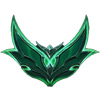 |
| Diamond |  |
| Master | 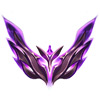 |
| Grandmaster | 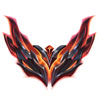 |
| Challenger |  |
Each ranked tier has four divisions within them with four being the lowest and one the highest. Once you hit 100 LP in division one of your tier, you will move up to division four in the tier above.
The majority of the global playerbase find themselves in Silver or Gold, showing just how hard it is to progress in competitive LoL.
To start pushing to Platinum, Emerald, and beyond, you’ve got to become properly dedicated and hone your skills. Specialising in a small number of champions and frequently checking the LoL patch notes for meta-changing nerfs and buffs are a good starting block to elevating your LoL game.
What is the League of Legends ranking distribution?
League of Legends has an enormous global playerbase which peaks at around eight million players every day, according to Riot. But what portion of LoL players can say they are in the top competitive tier and how many never made it out of Iron? Let’s take a look at the figures for June 2023, provided by Esports Tales.
| Soloqueue Rank | % of playerbase |
| Iron | 5.6% |
| Bronze | 24% |
| Silver | 29% |
| Gold | 24% |
| Platinum | 12% |
| Diamond | 3.0% |
| Master | 0.50% |
| Grandmaster | 0.046% |
| Challenger | 0.020% |
As you can see, the most populated tiers are between Bronze and Gold, with a rapidly-diminishing number of players scaling further up the ranks.
From Diamond onwards, there is a huge drop off in the number of players in the top tiers, with just 0.020% of players managing to reach – and most importantly, stay – at Challenger rank. As per Riot’s support site, there are only 2,050 Challenger slots across the globe.
It’s also worth noting that from Diamond onwards, players lose LP over time for having inactive ranked accounts, so to keep your high ranking you’ve got to keep playing.
How do I unlock ranked League of Legends?
To be eligible for ranked play in League of Legends, there is some criteria you need to meet.
Firstly, you must have a player level of 30 or above. Secondly, you have to own 20 or more champions. Once you’ve ticked those boxes, you can begin your placement matches.
How well you do in your placement matches will determine which competitive tier you’ll start in. Lose the majority of your games and you’ll begin right down the bottom in an Iron division. A strong showing may see you placed in higher tiers like Bronze or Silver.
Once your placement matches are over and you’ve been dropped into an appropriate tier, you can begin your journey to Challenger.
League of Legends ranked Season 13 end date
League of Legends ranked Season 13 is set to end some time in November 2023. Seasons typically end a couple of weeks after the conclusion of that year’s LoL Worlds tournament, and Worlds 2023 will wrap up on November 19. So expect the in-game season to end towards the end of that month.
It’s also worth noting that Season 13 is divided into two ranked splits – the first is due to end on July 17, with the second split running from that date until the end of the season in November.
League of Legends ranked Season 13 start date
League of Legends season 13 kicked off on January 10, 2023.
League of Legends ranked Season 13 changes
In order to keep players motivated to grind the game and climb, Riot made a few major changes to ranked at the start of Season 13: there are now two ranked resets, promo series between ranked tiers are now best-of-three instead of best-of-five, and visible rank influence has been removed from matches.
To better-incentivise the process of reaching the top of the LoL ladder, players can also expect better rewards. Meanwhile, for those struggling to make Gold, Victorious skins will now be made available for players in Silver and below – provided they put the work in.
You can check out Riot’s post on the start of season changes here for more information.
During the midseason, Riot made further changes to ranked, eliminating promotions entirely, and adding a brand new tier: Emerald.
Emerald tier is a new addition for ranked split two, and sits between Platinum and Diamond tiers. The new tier was added to help even out ranked distribution in the tiers below diamond. You can read all about it here.
And that’s all you need to know about the LoL ranks. If you’re new to League and are looking for tips, then be sure to consult our League of Legends beginner guide. Good luck on the Rift.
